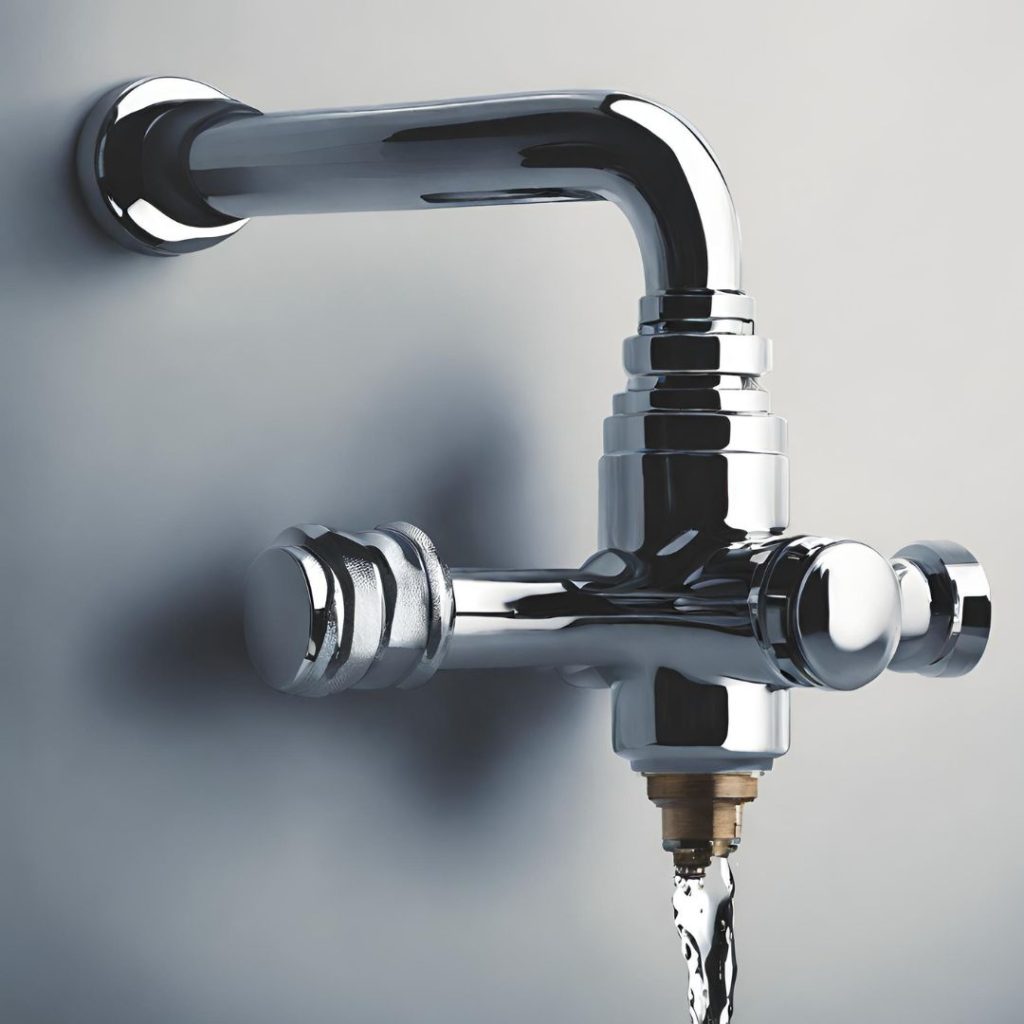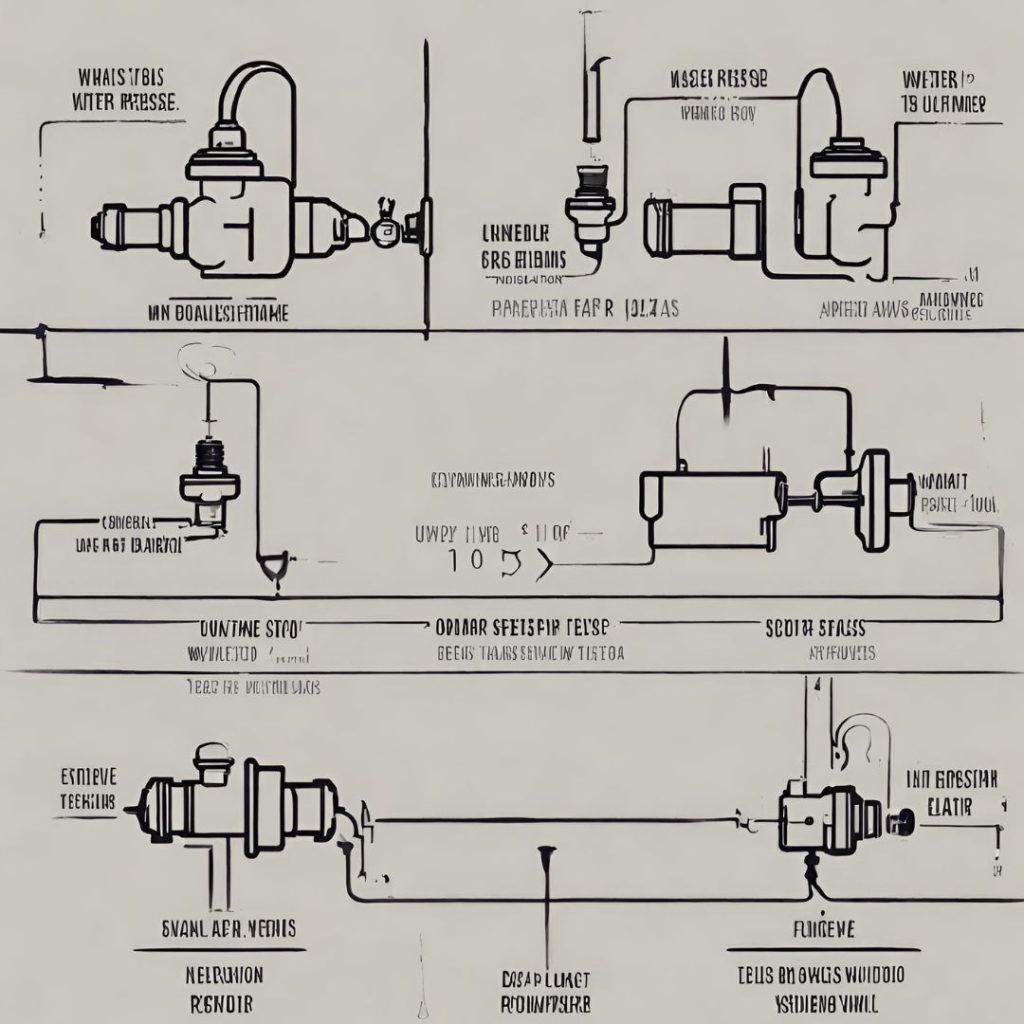Understanding the intricacies of your home’s water system can feel like an overwhelming task. However, one crucial component that should never be overlooked is the water pressure regulator. This unsung hero of your plumbing system plays a critical role in maintaining the balance of water pressure in your home, protecting your pipes from potential damage, and ensuring a consistent water flow.
In this comprehensive guide, we will delve into the world of water pressure regulators – what they are, how they work, and why they are so important for your home. Whether you’re a seasoned homeowner, a new property owner, or just someone with a thirst for practical knowledge, this article is designed to shed light on this often misunderstood plumbing component. So, gear up and let’s dive into the world of water pressure regulators.
What Are Water Pressure Regulators?

Water pressure regulators, as the name suggests, are ingenious devices that control and maintain a safe, consistent pressure level in your water supply. They act as sentinels, standing guard between the municipal water system and your home’s plumbing, ensuring the pressure of the water entering your home is kept at a manageable level. Without water pressure regulators, your home could be hit by the full force of the municipal water supply.
This could lead to damage to your appliances, burst pipes, and even flooding. They are the unsung heroes of your plumbing system, working tirelessly behind the scenes to protect your home and keep things running smoothly. These devices are typically installed where the main water line enters your home, and they are set to a default pressure level.
However, they can be adjusted if necessary to accommodate the specific needs of your home. Their operation is vital for the longevity of your appliances and plumbing system. In essence, water pressure regulators serve as a protective shield, preventing high-pressure water from wreaking havoc within your home.
They may not be the most glamorous part of your plumbing system, but they certainly are one of the most important. Without them, life could get a lot wetter, and not in a good way. So, here’s to the humble water pressure regulator, the silent guardian of your home’s plumbing system.
Concept of Water Pressure
Understanding the concept of water pressure and the role of water pressure regulators can be as intriguing as solving a complex puzzle. It’s about monitoring the force that propels water through our pipes, which, if too high, can lead to damaging leaks. Enter water pressure regulators – the unsung heroes of our plumbing system.
These nifty devices control the water pressure, ensuring it’s just right – not too high to cause damage, yet not too low to reduce functionality. They’re the guardian angels of our pipes, silently maintaining balance and certainly deserving of our appreciation.
Functioning of Pressure Regulators
Water pressure regulators, the unsung heroes of our plumbing systems, operate behind the scenes to maintain a steady, optimal water pressure level. They are the metaphorical gatekeepers, meticulously modulating the water flow. When the pressure from the public water supply is too high, the regulator jumps into action, reducing the pressure to a safer level before it reaches your plumbing fixtures.
This not only prevents damage to your pipes but also ensures a consistent water flow. Understanding the functioning of water pressure regulators can equip you with valuable knowledge to maintain your plumbing systems effectively.
What Are Water Pressure Regulators?

A Guide to Various Types of Water Pressure Regulators Water pressure regulators are silent heroes that guard the health of our plumbing systems. These critical components are the sentinels that keep a careful watch on the water pressure coursing through our pipes, ensuring it doesn’t skyrocket to potentially damaging levels. There are several types of water pressure regulators, each designed to tackle specific applications and plumbing arrangements.
The most common type is the direct-acting regulator. This model operates using a simple spring and diaphragm mechanism, making it an affordable and reliable option for most residential and commercial settings. Pilot-operated regulators are another type ideal for larger applications where stability and accuracy are paramount.
They employ a two-part system consisting of a pilot valve and a main valve. Together, they work to maintain a constant outlet pressure despite variations in inlet pressure or flow rate. Another variant is the pressure-reducing valve (PRV).
This type of regulator reduces incoming water pressure to a safe level before it reaches any plumbing fixtures within a property. Lastly, we have the integral bypass type. These regulators have a built-in bypass valve that allows excess water pressure to be diverted, providing an extra layer of protection.
Regardless of their differences, all types of water pressure regulators share the same goal: to maintain an optimal, safe water pressure level within our plumbing systems. By understanding the different types, you can make an informed decision about which regulator is best suited to your needs.
Adjustable Pressure Regulators
Adjustable water pressure regulators are an unsung hero in our daily lives, quietly maintaining the ideal water pressure in our homes and businesses. These clever devices keep your plumbing system humming along smoothly, preventing the headache of burst pipes or leaky faucets. They are the silent guardian, the watchful protector of your water supply.
So, let’s dive into the world of adjustable water pressure regulators, shedding light on their crucial role and how they manage to keep your water pressure just right. Because, in the battle against water pressure woes, these regulators are the superheroes we all need.
Non-adjustable Pressure Regulators
Non-adjustable water pressure regulators are often the unsung heroes of plumbing systems. These devices are designed to maintain a constant output pressure, providing a stable water flow in various applications. They may not come with adjustable settings, but their precision and reliability make them indispensable.
Think of them as the stoic gatekeepers of your plumbing system, unfazed by fluctuations and ensuring the water pressure is always just right. In essence, non-adjustable water pressure regulators are the epitome of ‘set it and forget it’ functionality, offering a straightforward solution to pressure regulation that is both efficient and effective.
High-flow Pressure Regulators
Navigating the world of water pressure regulators can feel like traversing a technical labyrinth. Fear not, as we’re here to shed light on the high-flow pressure regulator, a crucial component of this intricate puzzle. These regulators are akin to superheroes, protecting your water systems from the villainous high pressure, ensuring smooth and efficient flow.
They are the unsung heroes maintaining balance in your water systems, and keeping your appliances safe from sudden pressure surges. So, let’s delve deeper into the world of high-flow pressure regulators, unraveling their intricate workings and their paramount importance in our everyday lives.
Choosing the Right Regulator
Selecting the Perfect Water Pressure Regulators: Your Guide to an Optimal Water Flow Understanding the mechanics and intricacies of water pressure regulators may seem like a daunting task. However, this guide aims to simplify the process, helping you navigate the sea of choices to find the right regulator for your needs. Water pressure regulators, also known as pressure-reducing valves, are critical devices designed to control and stabilize the water pressure in your plumbing system.
They ensure that the water pressure is at a safe level, preventing damage to your pipes and appliances. Choosing the right water pressure regulators involves assessing your specific requirements and understanding the capacity and specifications of different models. Factors such as the size of your plumbing system, the water flow rate, and the maximum pressure your system can handle all play a crucial role in determining the appropriate regulator.
Moreover, while price is an important consideration, remember that a more expensive regulator is not necessarily better. Instead, focus on the quality, durability, and suitability of the regulator for your system. It’s also crucial to consider the regulator’s ease of installation and maintenance.
In the world of water pressure regulators, there is no one-size-fits-all solution. It’s all about identifying your unique needs and finding a regulator that can meet them effectively. Armed with the right knowledge and a clear understanding of your requirements, you can make an informed decision and choose a water pressure regulator that ensures optimal water flow in your system.
Size and Capacity Factors
Understanding the Size and Capacity Factors of Water Pressure Regulators Navigating the world of water pressure regulators can be a complex task, especially when it comes to size and capacity. Crucial yet often overlooked, these factors can significantly influence the efficiency and functionality of your water systems. The size of your regulator should align with your pipeline, while the capacity should correspond to your water usage.
A mismatch can lead to system strain, inconsistent water pressure, and potential damage. Remember, in the realm of water pressure regulators, size and capacity are not just numbers, they are vital determinants of your system’s performance and longevity.
Material and Durability Aspects
Material and durability are crucial aspects to consider when selecting water pressure regulators. These devices, subjected to constant water flow and varying pressures, need robust construction to withstand the test of time. Most regulators are made from brass or stainless steel, known for their strength and corrosion resistance.
However, the durability isn’t solely dependent on the material but also the quality of the internal components. Hence, it’s essential to select a regulator with a solid build, reliable seals, and sturdy springs. After all, a well-built water pressure regulator isn’t just an investment, it’s a guard against potential water damage.
Installing and Maintaining Regulators
Section Title: The Art of Installing and Sustaining Water Pressure Regulators Water pressure regulators, the unsung heroes of our plumbing system, perform an essential function in our daily lives. These devices, often overlooked, control the water pressure in our homes and businesses, ensuring a steady flow and preventing damaging high-pressure surges. Installing a water pressure regulator is a task that demands precision and a fair degree of technical know-how.
It’s akin to performing a symphony, where each part has to be in perfect harmony with the other. The process involves identifying the incoming water line, shutting off the water supply, and installing the regulator following the manufacturer’s instructions. It’s a dance between man and machine, a dance that, when perfectly executed, results in a well-regulated water supply.
Maintaining your water pressure regulator is equally important. Like a finely tuned instrument, it requires regular check-ups to ensure optimal performance. This includes monitoring for signs of wear and tear, checking for leaks, and adjusting the pressure settings as needed.
Remember, these regulators are not just pieces of metal. They’re the guardians of your plumbing system, silently working to protect your appliances, control your water flow, and, ultimately, save you money. So, don’t take them for granted.
Learn to install and maintain your water pressure regulators correctly, and they’ll serve you faithfully for years to come.
Step-by-Step Installation Guide
In this section, we’ll delve into a comprehensive, step-by-step installation guide for water pressure regulators. We’re not just going to provide you with dry instructions, but rather, we’ll sprinkle in some wit and clever explanations to keep it engaging. We understand that technical guides can sometimes feel like a chore, but we’re here to make this process an enjoyable learning experience.
So, let’s gear up and get acquainted with the art of installing water pressure regulators, making sure your water pressure is always just right.
Maintenance and Troubleshooting Tips
Keeping your water pressure regulators in top-notch condition can be a breeze with the right maintenance and troubleshooting tips. Careful attention to detail can help you spot any abnormalities in your water pressure, preventing minor issues from escalating into costly problems. Regular cleaning, timely replacements, and routine inspections can ensure the longevity and efficiency of your water pressure regulators.
If you’re faced with a sudden pressure drop or an unexplainable surge, don’t panic. These scenarios often have a simple fix, requiring nothing more than a little patience and a keen understanding of your regulator’s operations. Remember, a well-maintained water pressure regulator is key to a hassle-free water supply.
Frequently Asked Questions (FAQs)
What is the main function of a water pressure regulator?
A water pressure regulator is a valve that automatically cuts off the flow of a liquid or gas at a certain pressure. It is mainly used to control the pressure of the water coming into the home from the public water supply.
How do I know if my water pressure regulator is bad?
Some signs that your water pressure regulator may be faulty include varying water pressure, high water pressure, low water pressure, no water pressure, or even water leaks.
How often should you replace a water pressure regulator?
It is generally recommended to replace a water pressure regulator every 10-15 years. However, if you are experiencing problems with your water pressure, it might be worth having a professional inspect the regulator to determine if it needs to be replaced sooner.
Can a water pressure regulator increase water pressure?
No, a water pressure regulator cannot increase water pressure. It is designed to reduce and control the water pressure. If you have low water pressure, there may be other issues in your plumbing system that need to be addressed.
What happens if a water pressure regulator fails?
If a water pressure regulator fails, it can cause high or low water pressure, inconsistent water flow, and in worst cases, it can even cause damage to your plumbing fixtures and appliances due to the extreme pressure changes.
Is it hard to replace a water pressure regulator?
The difficulty in replacing a water pressure regulator varies depending on your level of expertise with plumbing. It may be a simple task for a professional plumber, but for a homeowner with little to no experience, it could be quite challenging.
Conclusion
Water pressure regulators are the unsung heroes of our plumbing systems. They are the unseen knights guarding our pipes, ensuring they are not overwhelmed by the brute force of high water pressure. They are the conductors of the underwater symphony, subtly adjusting and tuning the flow to maintain harmony.
So next time you enjoy a perfect shower or efficiently run your dishwasher, spare a thought for the humble water pressure regulator, quietly keeping the peace in the world of waterworks.
